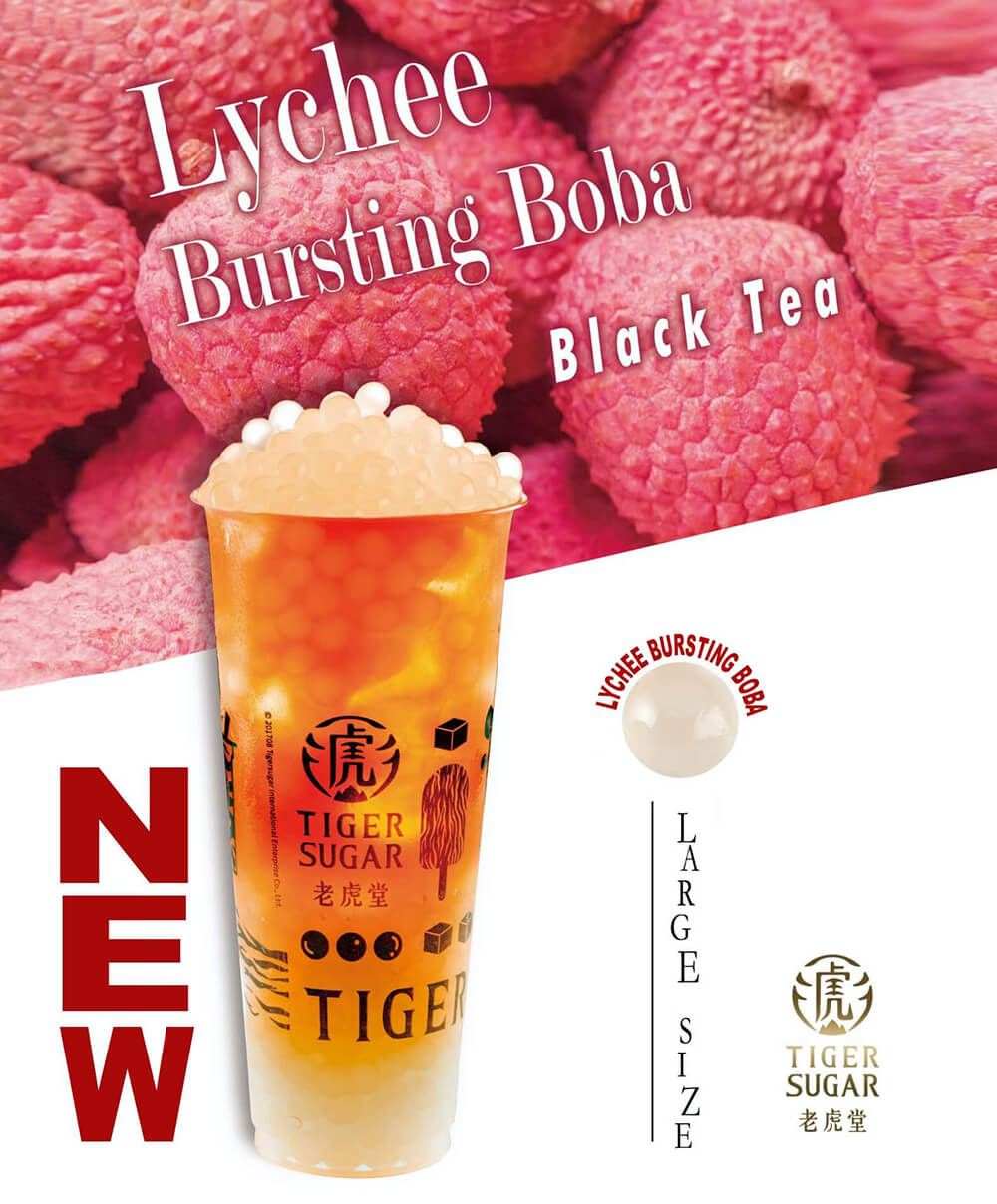Have you ever heard of tiger sugar? If not, you’re about to dive into one of the most talked-about dessert trends right now. Tiger sugar isn’t just a buzzword; it’s a culinary phenomenon that’s capturing hearts—and taste buds—around the globe. Picture this: a beautiful, swirling pattern of caramelized sugar that looks like a tiger’s stripes, drizzled over milk tea or desserts. Sounds amazing, right? Well, buckle up because we’re going to explore everything you need to know about this sweet sensation.
Nowadays, people are always on the lookout for something new and exciting when it comes to food. Tiger sugar has become the ultimate Instagrammable treat, with its striking visuals and irresistible flavors. But there’s more to it than just aesthetics. This dessert trend is rooted in tradition, with a modern twist that makes it accessible to everyone. Whether you’re a dessert lover or just curious about what all the fuss is about, this article has got you covered.
As we dig deeper into the world of tiger sugar, you’ll discover its origins, how it’s made, and why it’s become such a big deal. Plus, we’ll share some tips on where to find the best tiger sugar desserts and even how to make your own at home. So, grab a cup of coffee—or maybe a tiger sugar drink—and let’s get started!
Read also:Alijah Arenas Rising Star In The World Of Music And Entertainment
What Exactly is Tiger Sugar?
Tiger sugar is not just any ordinary sugar. It’s a special type of caramelized sugar that forms tiger-like stripes when poured over drinks or desserts. The process involves heating sugar until it reaches a deep amber color, then carefully drizzling it over the surface of the drink or dessert. The result? A stunning, golden-brown pattern that looks like a tiger’s stripes. It’s no wonder why it’s become so popular on social media platforms like Instagram and TikTok.
But tiger sugar isn’t just about looks. It adds a rich, caramel flavor to whatever it’s paired with, making it a must-try for anyone who loves sweet treats. Whether it’s drizzled over boba milk tea or used as a topping for cakes and pastries, tiger sugar takes dessert to the next level.
The Origins of Tiger Sugar
To truly appreciate tiger sugar, we need to understand where it came from. The trend originated in Taiwan, where boba milk tea is already a beloved national drink. Taiwanese vendors started experimenting with different toppings and flavors to make their drinks stand out, and tiger sugar was born. It quickly gained popularity because of its unique appearance and delicious taste.
Taiwan has a long history of creating innovative desserts, and tiger sugar is just one example of how they’ve managed to blend tradition with modern creativity. The technique of caramelizing sugar has been around for centuries, but the way it’s used in tiger sugar is a relatively new development. It’s a testament to how food trends evolve over time, influenced by both cultural heritage and contemporary tastes.
Why Taiwan is the Birthplace of Tiger Sugar
Taiwan’s vibrant food culture is a major reason why tiger sugar was able to take off. The country has a reputation for being a hub of culinary innovation, with street food markets and tea shops constantly coming up with new ideas. Tiger sugar fits perfectly into this ecosystem, as it combines traditional techniques with modern aesthetics.
Another factor that contributed to its success is the global popularity of boba milk tea. As Taiwanese bubble tea shops expanded overseas, they brought tiger sugar with them, introducing it to a wider audience. Today, you can find tiger sugar drinks and desserts in almost every major city around the world.
Read also:Liza Coloacutenzayas The Trailblazer Who Redefined Latinx Representation
How is Tiger Sugar Made?
Creating tiger sugar is both an art and a science. The process involves carefully heating sugar until it reaches the perfect consistency and color. Here’s a step-by-step guide on how it’s done:
- Heat granulated sugar in a saucepan over medium heat.
- Stir constantly to prevent burning and ensure even caramelization.
- Once the sugar turns a deep amber color, remove it from the heat.
- Quickly drizzle the caramelized sugar over the surface of the drink or dessert.
- Allow the sugar to cool and harden, forming the iconic tiger stripe pattern.
It’s important to note that making tiger sugar requires skill and practice. The sugar can burn easily, so timing is crucial. That’s why many tiger sugar drinks you find in cafes are made by professionals who have mastered the technique.
Tips for Making Perfect Tiger Sugar
Want to try making tiger sugar at home? Here are a few tips to help you get it right:
- Use high-quality granulated sugar for the best results.
- Work quickly once the sugar is caramelized to avoid it hardening too fast.
- Experiment with different patterns to create your own unique designs.
- Be patient—it might take a few attempts to get the hang of it.
With a little practice, you’ll be able to create stunning tiger sugar desserts that will impress your friends and family.
Where to Find Tiger Sugar Near You
If you’re eager to try tiger sugar but don’t feel like making it yourself, don’t worry! There are plenty of places where you can enjoy this sweet treat. Many boba tea shops and dessert cafes now offer tiger sugar options, so it’s easier than ever to find. Here are some popular chains that serve tiger sugar:
- Chatime
- Gong Cha
- Bubble Queen
- Tea Express
These brands have embraced the tiger sugar trend and incorporated it into their menus. Whether you’re in Asia, Europe, or the Americas, chances are there’s a tiger sugar drink waiting for you nearby.
How to Choose the Best Tiger Sugar Place
Not all tiger sugar is created equal. To ensure you’re getting the best quality, look for places that use fresh ingredients and have experienced staff who know how to make tiger sugar properly. You can also check online reviews or ask for recommendations from friends who’ve tried it before.
Another thing to consider is the variety of options available. Some cafes might offer tiger sugar only on certain drinks, while others might have a whole range of desserts featuring this sweet topping. The more choices you have, the better!
Health Benefits and Concerns of Tiger Sugar
While tiger sugar is undeniably delicious, it’s important to consider its nutritional value. Like most desserts, it’s high in sugar and calories, so moderation is key. However, there are some potential benefits to consuming tiger sugar in moderation:
- Rich source of energy due to its high sugar content.
- Contains trace amounts of minerals like calcium and magnesium.
- Can be enjoyed as an occasional treat without guilt.
On the other hand, excessive consumption of sugar can lead to health issues such as weight gain and tooth decay. That’s why it’s important to enjoy tiger sugar as part of a balanced diet.
Alternatives for a Healthier Option
For those who want to enjoy the flavor of tiger sugar without the extra sugar, there are some alternatives you can try:
- Use stevia or other natural sweeteners instead of granulated sugar.
- Opt for smaller portions to reduce sugar intake.
- Pair tiger sugar with healthier ingredients like fresh fruit or yogurt.
By making smart choices, you can still enjoy the taste of tiger sugar while keeping your health in check.
Tiger Sugar in Pop Culture
Tiger sugar has made a big splash in pop culture, thanks in part to its photogenic nature. Social media platforms like Instagram and TikTok have played a huge role in spreading the trend, with users sharing photos and videos of their tiger sugar drinks and desserts. Celebrities and influencers have also jumped on the bandwagon, further boosting its popularity.
But tiger sugar isn’t just a passing fad. It’s become a cultural phenomenon that reflects our growing appreciation for visually appealing and delicious food. As more people discover the joy of tiger sugar, it’s likely to remain a staple in the dessert world for years to come.
Why Tiger Sugar is Here to Stay
There are several reasons why tiger sugar is likely to stick around:
- Its striking appearance makes it stand out in a crowded market.
- It appeals to a wide range of demographics, from young adults to families.
- It’s versatile and can be used in a variety of dishes.
As long as people continue to crave unique and delicious treats, tiger sugar will have a place in our hearts—and our stomachs!
DIY Tiger Sugar Recipes
If you’re feeling adventurous, why not try making tiger sugar at home? Here’s a simple recipe to get you started:
Ingredients:
- 1 cup granulated sugar
- 1/4 cup water
- Your favorite drink or dessert base
Instructions:
- In a small saucepan, combine sugar and water over medium heat.
- Stir continuously until the sugar dissolves and the mixture turns a deep amber color.
- Remove from heat and let it cool slightly.
- Drizzle the caramelized sugar over your drink or dessert in a zigzag pattern.
- Allow it to cool and harden before serving.
With this recipe, you can create your own tiger sugar drinks and desserts whenever you want. Plus, it’s a fun activity to do with friends or family!
Tips for Perfecting Your DIY Tiger Sugar
To make your homemade tiger sugar even better, here are a few tips:
- Experiment with different sugar-to-water ratios to achieve the desired consistency.
- Use a squeeze bottle for more precise drizzling.
- Store leftover caramelized sugar in an airtight container for future use.
By following these tips, you’ll be able to create tiger sugar that rivals the best cafes out there.
Conclusion: Why Tiger Sugar is a Must-Try
Tiger sugar has taken the world by storm, and for good reason. Its combination of stunning visuals and delicious flavor makes it a must-try for anyone who loves sweet treats. Whether you’re enjoying it at your favorite boba tea shop or making it at home, tiger sugar is sure to leave a lasting impression.
So, what are you waiting for? Head out and try some tiger sugar today! Don’t forget to share your experiences with us in the comments below. And if you’re feeling inspired, why not try making your own tiger sugar creations? The possibilities are endless, and the only limit is your imagination.
Table of Contents


